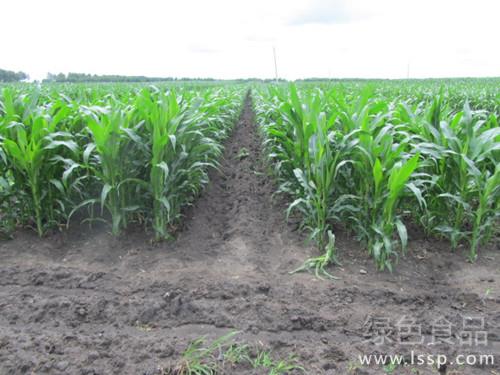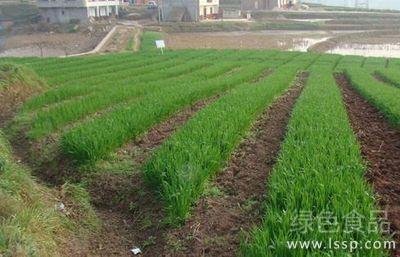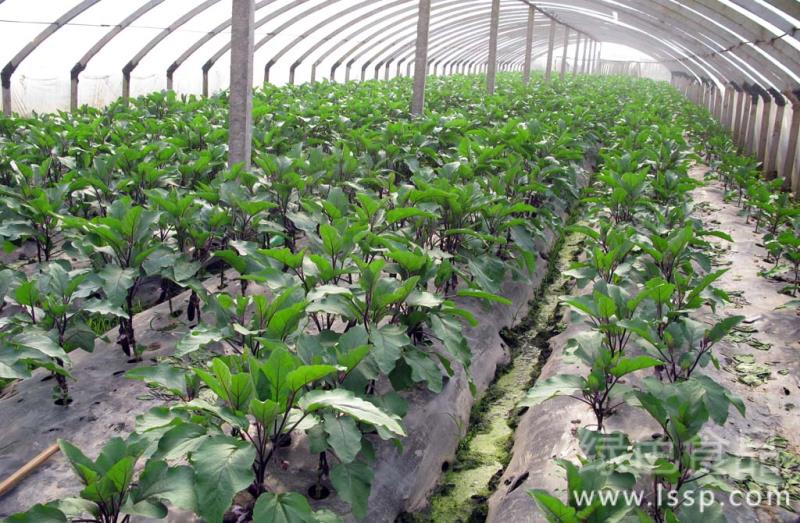Main Technical measures of Maize cultivation with large Ridge and double-row plastic Film mulching

Cultivation techniques of Maize with large ridges and double rows
The cultivation technique of maize with large ridge and double row can not only exert the marginal effect, improve the utilization rate of light energy and water and fertilizer, but also increase the yield. According to the relevant investigation and research, when the fertilization level is the same, compared with the conventional seed cleaning cultivation technique, the maize double-row cultivation technique with large ridge will increase the yield by about 7%, and if the planting density is increased, it can reach 23% Mel 33%.
1. Technical standards and requirements
The concept of maize double-row cultivation technique with large ridges is to plant two rows of corn on large ridges. Although the ridge distances of large ridges are different, they are generally between 90 and 110cm. The cultivation technique of maize with double-row plastic film mulching with large ridges has not only large yield increase, high economic benefit, stable yield increase effect, but also strong practicability. To implement this technique, we must first make large ridges, and change the small ridges around 70cm into large ridges around 100cm. Then there is a double row, with two rows of corn planted on a large ridge, with small row spacing of 30cm and large row spacing of 67.5cm. The next step is to cover the polyethylene mulch with a width of 75cm or 80cm and a thickness of 0.006-0.008mm. However, in addition to the above points, we should make a reasonable selection of varieties and take some related measures, such as reasonable close planting, increasing fertilizer, fine management and so on. The reason for the yield increase of maize with large ridge and double row cultivation technique is mainly due to the good ventilation and light transmittance of large ridge and double row cultivation technique. if the late maturing varieties are reasonably selected at the same time, the yield increase effect will be ensured. Doing a good job of warming and moisturizing with plastic film mulching on large ridges will also increase the planting density and increase the number of harvested plants and ears per unit area. At the same time, it will play a certain role in changing the ecological environment of film-covered land, strengthening the decomposition and supply of soil nutrients and improving the growth and development speed of maize.
two。 Technical key points of double-row cultivation with large ridges
2.1 change stubble to ridge and apply fertilizer
Due to the strong adaptability of corn, there are no special requirements in soil and rotation, as long as it is not beet or sunflower, other plants can be planted. However, the drainage of the land needs to be good, so when carrying out the work of land preparation and ridging, it should be raked before ridging. At the same time, the soil preparation in summer and autumn should be done well, and the application of farm manure per mu should not be less than 2t.
2.2 Select improved varieties and do a good job in treatment
The scientific selection of varieties is one of the main reasons to ensure the increase of yield, and comprehensive consideration should be taken in seed selection. For the problem of seed treatment, the first link is budding. In the process of sprouting, turn frequently and ensure that the temperature is balanced. Usually after 24 hours, the seeds grow small buds about 1cm, and then the work of accelerating germination can be stopped. Then find a shady place to spread out the seeds to cool the sprouts, and after they fully adapt to the external environment, you can sow the seeds.
2.3 reasonable close planting to ensure yield with fertilizer
One of the key links to increase the yield of corn is reasonable close planting. Classification guidance should be given to reasonable close planting, in which the plant spacing of farmers with good soil fertility and high investment is 8 inches, while that of farmers with poor soil fertility and low investment is 9 inches.
Because the plant of maize is tall and luxuriant, so correspondingly, the amount of fertilizer needed is not low, and the high yield of corn can be made only on the premise of full fertilization. And while ensuring the amount of fertilizer needed for corn, it is also necessary to achieve the fertilization model of the combination of organic fertilizer and chemical fertilizer. In addition to 2t farm manure per mu, specific fertilization methods also need to plant diammonium 25kg, urea 2.5kg and zinc fertilizer 2kg. For some qualified farmers, potash fertilizer 3kg per mu and topdressing urea 25kg per mu can be used. If there is a phenomenon of de-fertilization in the later stage, foliar fertilizer should be sprayed in time to ensure the fertilizer demand of corn.
2.4 sow seeds at the right time and cover with plastic film
Corn can be sown early at the right time, which will increase the effective accumulated temperature, avoid soil water consumption and increase production. According to the relevant investigation and research, the best sowing time of plastic film mulching maize is 7-10 days earlier than that in the open field, usually between the end of April and the beginning of May, which is not suitable for saline-alkali wetlands, which will make the seeds mildew and cause lack of seedlings.
2.5 tall and short collocation, reasonable intercropping
For example, the use of tall and low crop intercropping will effectively solve the problem of ventilation and light transmission, but also facilitate crop rotation, and it is also very beneficial to mechanical operation. Among them, the best intercropping ratio is 4 large ridges for plastic film mulching corn and 6 small ridges for dwarf crops.
2.6 Fine management to promote ripening and increase production
Plastic film mulched corn sometimes leads to scalded and frostbitten seedlings due to low seed germination rate and incorrect release time, and may also lead to lack of seedlings and broken ridges due to incorrect fertilization or underground pests. When the above situation occurs, relevant measures must be taken in a timely manner. Among them, there are mainly two ways of replanting and seedling replenishment.
In general, plastic film mulched corn seedlings are fixed in 3-5 leaves. If the underground pest is serious or the tuyere plot can fix the seedlings later according to the situation. The timing of seedling determination must be grasped well, not too early or too late. During the seedling fixing period, the weak seedlings should be removed to ensure that the seedlings in the whole field are roughly the same. At the same time, we should pay attention to corn before and after jointing, will grow in the stem base tiller will consume a lot of nutrients, must be checked at any time, once found to remove it in time.
For the field management of film-mulched corn, the following aspects should be achieved. When the damaged place is found, it should be compacted with soil immediately to avoid ventilation and heat dissipation and harm to livestock and poultry. Seedling release should be done immediately after the seedling is unearthed, the plastic film eye should be small, and it should be pressed strictly with wet soil. Some preparatory seedlings should be set aside before sowing so that they can be replanted immediately when the lack of seedlings is found. When corn seedlings grow up to 30-40cm, the furrow should be ploughed in order to kill grass, loosen the soil and accept Rain Water. When 8-9 leaves of corn, urea 25kg should be applied at one time, and one-time operations such as eye-catching, fertilizer and soil mulching should be done at the same time. When corn enters the hard cover, peeling and drying should be done to promote its dehydration and increase its maturity, so as to achieve the purpose of improving commodity quality.
2.7 Weed control
Plastic film mulching corn should strengthen the work of weed control, and comprehensive control measures can be adopted in this regard. Attention should be paid to the basis of weeding before covering the film. The quality of land preparation should be improved and chemical weeding should be adopted at the same time. Make sure that the soil on the ridge surface is fine and flat to make the film stick to the ground. The high temperature produced by sunlight can burn some weed seedlings to death, and the weed control rate can be as high as 80%. The leveling of ridge surface is also one of the prerequisites for chemical weeding. The specific method of pesticide application should be considered according to the situation of water source and local conditions. When the water source is good, the amount of medicine that can be used is 750kg/hm2 mixed with water spray on the soil surface. If the water source is not good but the soil moisture is good, the drug-soil method can be used to deal with the soil surface, which is not only small in difficulty and fast, but also beneficial to popularization. During this period, attention should be paid to increasing the amount of soil mixing, and fine soil should exceed 1800kg/hm2, which will help to cover ridges thoroughly and evenly. The effect of using this method is similar to that of spraying method. The common varieties of herbicides are Rasol, atrazine and diuron, which can be selected according to local conditions. The specific dosage standard should be used in accordance with the requirements in the product manual. When using mixed varieties, the dosage of each herbicide can be reduced appropriately. At the same time, the protection of plastic film should be strengthened in the seedling stage of maize, once it is found that there is damage, it can be sealed with soil in time and burn most of the weeds by using the high temperature produced by the surface. It can also be combined with topdressing to carry out intermediate ploughing and weeding. For the land with too many weeds, the plastic film can be removed, and the work of topdressing, weeding and soil cultivation can not only control weeds but also prevent lodging.
2.8 Control of diseases and insect pests
The control of corn borer should be strengthened. The eggs of Ostrinia furnacalis basically fall before heading, and generally concentrate on the heart and leaf stage to destroy corn, which greatly affects the yield. According to relevant investigation and research, the first-generation borer damage will lead to a yield reduction of about 10%, and the second-generation borer damage will lead to a yield reduction of about 0.7%. Therefore, we should focus on the prevention and control of this.
The specific measure adopted is to use 50% phoxim EC 7.5kg/hm2 with water during the corn trumpet period, then make granules with fine sandy soil 247.5kg, and put 7 or 8 grains in each corn trumpet mouth to achieve the purpose of controlling corn borer. Some control techniques such as Trichogramma and Beauveria bassiana can also be used to control corn borer.
2.9 timely harvest and removal of waste film
Plastic film-mulched corn is usually mature with live stalks, so it is necessary to harvest at the right time. After harvest, the old plastic film should be picked up and treated uniformly to purify the soil and ensure the ecological environment of the farmland. On the other hand, some agricultural mulch films such as photodegradation and grass fiber should be vigorously promoted, which can play a certain role in preventing farmland pollution and public pollution, but also reduce the cost.
- Prev

Important measures for managing high yield of wheat in winter
Important measures for managing high yield of wheat in winter
- Next

Scientific fertilization Technology of pollution-free vegetables in Green Food cultivation
Scientific fertilization Technology of pollution-free vegetables in Green Food cultivation
Related
- Fuxing push coffee new agricultural production and marketing class: lack of small-scale processing plants
- Jujube rice field leisure farm deep ploughing Yilan for five years to create a space for organic food and play
- Nongyu Farm-A trial of organic papaya for brave women with advanced technology
- Four points for attention in the prevention and control of diseases and insect pests of edible fungi
- How to add nutrient solution to Edible Fungi
- Is there any good way to control edible fungus mites?
- Open Inoculation Technology of Edible Fungi
- Is there any clever way to use fertilizer for edible fungus in winter?
- What agents are used to kill the pathogens of edible fungi in the mushroom shed?
- Rapid drying of Edible Fungi

